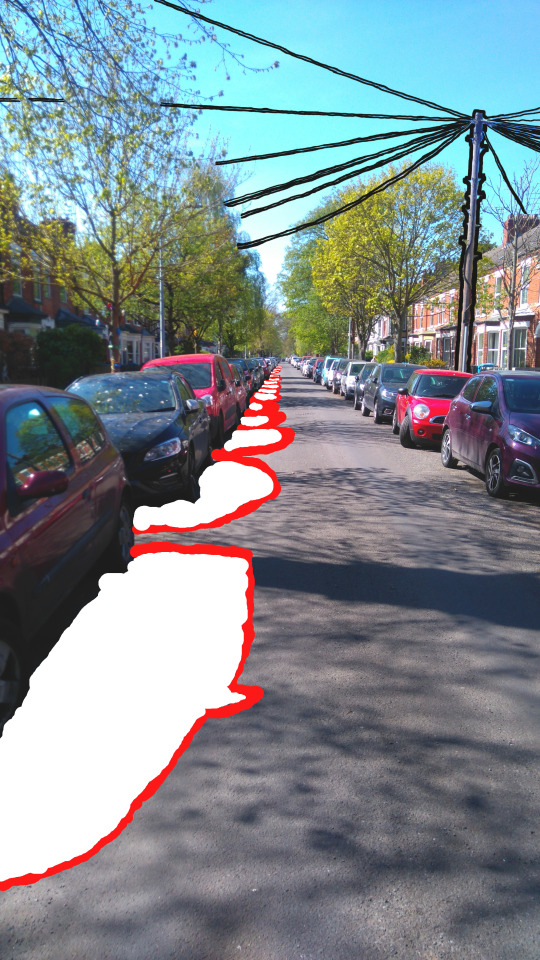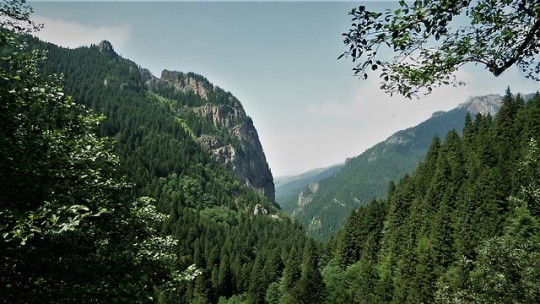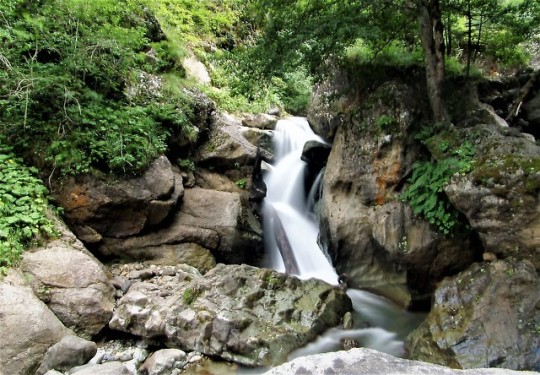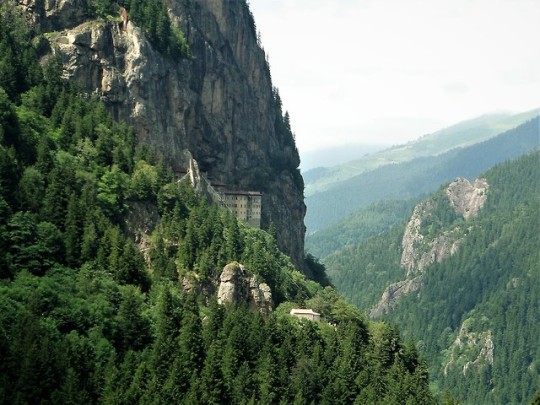#Planeless travels
Photo

In Beshbadam, in the east of Kyrgyzstan, we wanted to camp on the other side of the river. Our driver, who picked us up hitchhiking out of Arslanbob, dropped us off by a very interesting bridge.The crossing was, lets say, a bit wobbly.
Click on the link below to watch the video.
https://www.youtube.com/watch?v=M0sgizGH3oo&t=5s
#Kyrgyzstan#Central Asia#Hitchiking#Hitchhike#Hitchhike Central Asia#Hitchhike the world#Hitchhike Kyrgyzstan#Hitchhiking couple#nomad couple#backpacking couple#hitchhiking stories#hitchhiking diary#travel diary#travel photos#amazing landscapes#planeless travels#travel series#travel photography#camp spot#wild camp#wild camping#camping wild#Beshbadam#Arslanbob#travel documentary
1 note
·
View note
Photo






First DOR and First “Planes” in Days
Nov. 29, 2020
The skies were extremely clear from Thanksgiving through today. The atmosphere was high in OR to the point that there were no aerial interlopers at all in our California skies. After the “curfew” was imposed on Californians, the atmosphere reflected the despair of the people. When they are actually able to grid the sky, it is noteworthy because they can rarely do this anymore. Fear is the frequency that they want us generating. Our mental state affects the sky, but people don’t realize it. I could tell that the parasites were not able to ruin Thanksgiving, however, because on that day, despite the power company turning off the power on thousands of SoCal households, the skies were unbelievably pure and the wind was blowing (which was the reason they turned off the power. Apparently SoCal Edison can no longer keep their power poles up when a breeze blows).
There were almost zero planes for days. On these days without planes, I keep looking and waiting. I didn’t see a single one on Thanksgiving. On a typical planeless day, they return at sunset and through the night there will be flashing lights crossing the sky. I think it may have something to do with the negatively ionizing properties of the sun’s rays making the atmosphere too high in OR for the parasites to traverse it. They can’t be here unless they alter the energy field to their needs. They use us as a DOR factory by generating more and more fear through media and of course the EMF by which most people take in the disinformation. We then live in a lowered state of consciousness and generate food for them. There is a lot less smog and a lot fewer chemtrails in the sky these days, and this is indicative of less DOR, and therefore less food for them. This is why they’re panicking and creating the hysteria now. A Yahoo headline today said that the US would “face the apocalypse” before Christmas. The parasites are so stricken with ComputerVirus-19, they know their days are numbered. But apocalypse also means “curtain opening,” so hopefully more Americans eyes will be opened in the next month.
Today, I saw a DOR mass to the west, the first DOR in days. As it grew, I kept watching for a plane. It’s not that the planes make this sky, but that the craft we think are planes need a DOR sky in order to travel here. So first comes the DOR, and then come the crafts, not necessarily the other way around. This is not a “spraying operation.” This is much more complex than that and not something within most humans’ capacity to understand. Sure enough, eventually the “planes” went through the mass. I noticed how very quickly it spiraled and transmuted. The transmutation was so quick that a chembow came right out of the neutralized chemtrail across the sky.
I’m including a gratuitous photo of the moonrise. Tonight, there continue to be some craft in the sky, leaving trails behind them. Notice the patterns where you are, especially if you have orgonite. You may see the same rapid cleanups that we do, and you may also notice that the bad days in the sky coincide with the bad days for the humans around you. It’s most important not to generate food for them, so if you can, please turn off the EMF emitters and take a news break. There has never been a better time to make orgonite and educate ourselves with all this “forced” solitude.
#orgone#orgone energy#orgonite#chemtrails#clouds#california#thanksgiving#planes#socal edison#power outage#apocalypse#computervirus-19#EMF#smart phones#wifi#moon#etheric war#energetic war#parasites#contact with space
8 notes
·
View notes
Photo

Drawing into Ecology?
Jul 26th, 2020
In the image are two highlighted features found in certain moments of elated fancy – or as I might like to call them: visions. There is the highlight of the shadow cast of the cars and a telephone pole with its wires. At a particular time; they looked like the teeth of something eating the world of artificial colouring – amongst the disturbingly beautiful deadness of the telephone pole – besides the other forms of a contradictory and complementary nature lining the street under a blazing corona sky; the blue of empty summers, planeless and ancient. For a moment was I noticing a swerving of sorts, a blend of imaginings? Do these ‘visions’ that come with a mild intensity of a hypnotic fancy stare at the tightrope of ecology?
Maybe a distressing apparition, but these are witnessed from a transience sense of neutrality; my fear is only reflected by the inseparability to the situation. This interest has also led me to look out of my window, notice the wonder of the clouds; striking, crystallised and golden. Like clockwork I watch the starlings hop from antenna to gutter to wall to feed, together with a carefulness of each others surroundings. Poking heads left to right, up-down, stepping, contracting little treads and relaxing muscles so delicately small, hop to scurry away. Flying, between the wires and right angles embedded in architecture. Their movements across this landscape makes me feel as if a different world enters our all too ordinary one; the paralleling shadows of repeating structural design; the tiles are disturbed by a flurrying of twisting living silhouettes. I guess somewhere in this sensation is the same kick as what birdwatchers get? I had begun to notice their timings, but after overhearing talk of financial stress, the neighbours have since left with the bird feed – the starlings are rarely seen again with such differing encounterance of their eager and keen gatherings.
Seeing ecology in this way as a warping fluid and static communicative experience is paradoxical, but it is no different as looking around the forests or skies and witnessing the insects and birds exchange between each other amongst the landscape they reside. It is like observing habitats, but it is trying to include everything; the impression of the shadows against the temperament of the cars and their situation, the telephone pole with its drooping wires reminiscing the threads of webbed leads of docility – and of course my present mood between the lot. As soon as one sets foot into it, its fleeting and ever passing, hard to capture, to hold still, I scribble in marks before closing the book. Walking home or to the studio; travelling like in a dream – a wandering one of waking tremors. The growing, moving discourse of nature – things emerge as points on the horizon with the gargantuan bulges of shaped texture scatter itself in propensity to the central point of the image – the gravity of it. I fall off losing myself to realise it, I find myself exploring to witnessing the situation then realising the image once more, falling off again then exploring, finding, falling etc.
In trying to describe the subject of ecology, I am at a loss as to how to cohesively capture this and these sorts of sensations in paint, from my understandings of it. Things are one thing, imaginings are another. Definitely more experimentation is required in regards to the latter – as the above statement inquires in descriptive poetic terms; an attempt at searching into it. However the actual thing of paint have had me impulsed to resource from raw material. To grow the plants, press the seeds, refine, source and mine the necessary ingredients’ required to make oil paint. It is quite the venture I assume a relaxed role to build it, for now. I hope to live to see some fruition of the sensation in the years to come; I wish to live a long life with a rich garden that sustains me.
By doing this I will feel, hold and handle the stuff of seeds, soil and water, between the pottedness of plastic and ceramic order – at least some part of my practice will seems more ‘ecological’ by rearing the materials needed from the land of my garden. Making my own paint, all grown and sourced - though this is an ambitious undertaking, amongst all the other matters in life. With that said ecology plays out an impulse in me to behave and interact with the world. The word ‘ecology’ I am using it in an interchangeable and general sense drawing upon the activities of the land, with all its plants, bodies of water and animals, and between ourselves as acting individuals within communities, the buildings they emerge from, and our institutional and political systems tied into them. An expanding situation emerges whereby looking at trained and learned material processes such as permaculture that hold relationship with the term ecology may offer insight: Drawing and the Twelve Principles of Permaculture.
I want to paint my environments with this in mind, in doing so I hope to find a means of expression that inhabits something worthwhile to those engaged with the art. But painting for me provides an anchor of experience for visual digression. Writing on the other hand demands much more of a different sort of cognitive process; getting to the point. Whilst I find performance a much broader field to apply into day-to-day experience – and in my opinion it offers possibly the most applicable of artform’s within communities – when working supposedly ecologically.
This might be a time to write about Vega to draw upon what I might mean by that. At least for the first time liberating a definition of it outside of an application form. Vega is a collaborative project including myself, Thomas Parker and Adam Ekin. It has been an organic process (as with all art) – but what interests me with this project as opposed to my painting or writing is the attitude it adopts towards adaptation – Vega is always changing and may possibly never find fixture. The project is as much an external affair as an internal creative disposition – you could see the project as an attempt at mediating circumstances in and around it – like a heart would beat faster or slower depending on ones current situation, whilst providing the necessary flow of blood to all the bits of the body. And Vega would be incomplete without the humanity to undergo it. That said the project spills with connections, in all walks of life.
Vega is organic; and like all organics it embodies certain rules, (eating, shitting, sleeping, growing etc.) that has until presently enough, kept the project going still venturing into a void of creative platforming. What have been the rules of Vega thus far?
We accept all contributions – integrating content into the wider narrative. In integrating content artists remain sensitive to the other components of the narrative and the situations outside of it. This hasn’t been so much of a problem as the story is about a giant living spaceship sailing the dying days of the universe’s decay. A relatively open book in terms of imaginative fancy. The issue has been in writing, whilst collection remains a performative exercise (even this blog post may find entry into the world of Vega - from a performative position; an ego of mine trying to analyse the artist inside). The process of writing Vega serves to delve in the products of the art for commission or need for creative application and we piece together the connections between them.
I am pleased to say a number of ours efforts has attracted some attention; we have been invited to interviews to discuss our ideas further or shared them with interested parties. Our proposals are prepared with a practice to integrate and adapt, we have often been unable to allude a ‘concrete’ idea or that due to the high number of applicants they have been unable to provide feedback, or non at all. This has fostered some animosity to aspects of the organisational fabric of the arts and I am sure I am not the only one. Therefore, I have come to a conclusion that there is an attitude within the infrastructure concerned with dead ideas, at least you can mark a grave stone by them (and a ticket price). Though our undertakings of preparing applications and their received feedback has offered support, insofar has helped provide an internal framework for Vega to apply itself into a real-world context. Therein Vega functions as it always has, as an archive, supporting its many layers – until the next opportunity.
It has been the case that Vega thrives in conversation; it is a communal context, not an applicant. Whether working between collaborating artists or with those we’ve been offered a platform with - by mutual partners; it provides us the means to actively perform the work thus understand and develop it’s ideas further. Layered into it are the elementary parts of the story alongside the situations that the art needed to resolve (such as a project proposal or invitation to talk) – this has required Vega to become a multi-disciplinary interface generally focused towards finding the next platform that may lead on to more platforms. Vega is a void of exposition.
Working in this way is highly interactive, encouraging within practice as much outside participation as possible, including responses and impulses – recording the attitudes and opinions of those engaged. Drawing upon a diverse range of ideas the project forms a complex web of parts encased within the Vega package – so to speak. As mentioned it is the artist’s job to adhere the seemingly unrelated into a cohesive whole. In doing so artists practice a form of letting go of the confines of the narrative alongside others to find a renewed sense of meaning and direction, without killing the idea.
I believe here lies the concept of artist as community mediator – a catalogue of others. But with this I bare a warning of a purest pursuit; for one would be engaged in turning themselves inside out! To what end if not to make a living. In this sense the artist functions as a sort of traveling merchant, exchanging the goods of ideas primarily above the modern doctrines of economics. Perhaps a visual analogy of travel could be understood in this: The Zig Zag. Engage with communities like an electrical charge, but what is the voltage?
Appendixes:
Barker, G. (2020) Drawing and the Twelve Principles of Permaculture. Available at: https://fineartdrawinglca.blogspot.com/2020/05/drawing-and-twelve-principles-of.html (Accessed: 25, Jul, 2020)
Barker, G. (2020) The zig-zag. Available at: https://fineartdrawinglca.blogspot.com/2020/05/the-zig-zag.html (Accessed: 25, Jul, 2020)
0 notes
Video
youtube
In December 2016 we hitchhiked for the first time.IN THAILAND!!!! It was a long and successful journey. We went from Ayutthaya, near Bangkok to Chiang Mai in the north of the country. It took two days and we travelled 664 kilometers thanks to the kindness of strangers.
#hitchhiking stories#hitchhiking couple#thailand#hitchhiking in thailand#people are awesome#nomads#autostop#globetrotters#a long journey#worldtrotters#planeless travels#south east asia travels#travel video#hitchhiking video#hitchhiking documentary#hitchhiking series#travel series#travel vlog#hitchhiking vlog#vlog#how to hitchhike
1 note
·
View note
Photo





🎞️🇹🇷️ https://youtu.be/5STS5-vuUBQ 🇹🇷️🎞️
The Sumela Monastery in Trabzon Turkey, has been closed for renovation for quite a few years now. We went there anyway and got some stunning pics from a distance. Cool place huh?
Check out our vlogs on YouTube. Last year we hitchhiked 23,000 kilometres from Thailand to Spain and w’ere currently posting our Turkey videos. Enjoy.
🎬 https://www.youtube.com/c/timezonejunkies?sub_confirmation=1
#Turkey#Amazing Turkey#Trabzon#Sumela Monastery#Turkiye#Beautiful Turkey#Black Sea Turkey#Hitchhiking the world#Autostop#Hitchhikers#hitchhik#hitchhikin#Life on the road#Thumbing it#Travel Turkey#travel the world#Planeless travels#No planes#overlanding#overlanding travel#travel youtuber#travel series#travel vlog#travel vlogger
0 notes